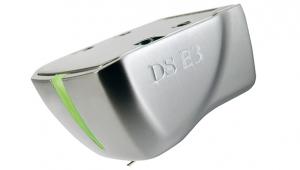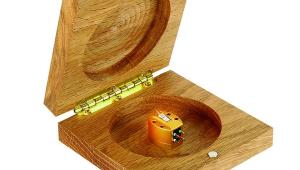Luxman PD-191A Turntable

 Few brands can match Luxman when it comes to blending traditional engineering values with timeless elegance, and the new PD-191A flagship is an exemplar of the art
Few brands can match Luxman when it comes to blending traditional engineering values with timeless elegance, and the new PD-191A flagship is an exemplar of the art
There is a coterie of Japanese brands whose products never fail to delight. Along with Air Tight, Denon, SAEC, Stax and a smattering of other high-end producers, Luxman has provided gem after gem, from valve amps of undeniable desirability to great turntables. Luxman's latest flagship deck, the PD-191A, honours the brand's traditional mix of beguiling sound, superior build quality and stunning looks.
At £11,000, it should be just that: beguiling. In the UK, that price includes the dust cover, an optional extra elsewhere. I don't know how much more they charge, say, the French, but as a UK spokesperson told me, 'UK customers expect a lid'. If you wish to complete the ensemble with Luxman's £2000 LMC-5 MC cartridge then there's a further £500 saving to be had. Our deck was supplied sans pick-up…
Open Arms
Luxman isn't absolutist about these options or, indeed, the rather delightful arm, as the literature shows arm boards for Ikeda, SME, Fidelity Research, SAEC and Ortofon tonearms, a blank for drilling for other mounts, and even a plate for 12in SME arms. I'm not sure how many customers would opt for others, though, as Luxman's new LTA-710 arm – co-developed with SAEC – is a dream to use if, like me, you have no beef with detachable headshells.
This arm is a knife-edge bearing design that looks like a 21st century restyling of EMT/Thorens arms of yore with a cylindrical hub. Its effective length is 10in, and it comes with an overhang gauge that's a doddle to use. You place it over the spindle, pointing toward the pivot point, and a gap in the grid on the gauge shows you where the stylus should be.
Anti-skating and stylus pressure are both of tried-and-tested methods. The former uses a hanging weight on a nylon thread, the latter is balanced by setting the arm to float. Position the freely rotating scale to 0, and then dial in the tracking force with the counterweight.

Luxman does not follow current practice by fitting phono sockets at the back of the PD-191A, à la Thorens, Pro-Ject, etc, because it uses a DIN-type connector directly into the arm base. Cable fetishists could, I suppose, play with other cables, but the other reason is to facilitate third-party arms with their own captive or plug-in cables.
If you're wondering where the rest of the £11k comes in then high mass provides part of the answer. The deck weighs 26.4kg including dust cover, and has a 491x393mm (wd) footprint. The platter alone is 5kg, so Luxman supplies 'keys' that screw in for fitting or removing. Fortunately, the belt goes around the circumference, so you're spared the trial of fiddling with a belt under the platter – and the usual shower of curses.
Simple Setup
Protecting the pulley is a plate on four legs that simply presses into place once the belt is fitted. The only other element of setup for the PD-191A is adding the rubber mat and levelling the chassis via its four adjustable feet. AC mains enters via an IEC socket on the back, another opportunity for cable devotees to experiment. One might also play around with headshells that use the Ortofon/SME bayonet, but the one Luxman supplies is a fine thing made of aluminium, with OFC wires.
Operation, too, is straightforward, such that seasoned audiophiles will only really need to examine the owner's manual – one of the best I've seen, by the way – for the arm's specifics. A main on/off button at the extreme left provides power, while the larger press button to its right starts and stops the turntable.
Next to it is the rotary, which selects 33, 45 or 78rpm. Then comes a window for viewing the strobe, which is used in conjunction with the three rotary controls to its right to provide fine adjustment for each of the three speeds. The speed accuracy was impressive, confirming PM's observation that the deck provides 'direct-drive standard' low-rate speed stability.
![]() Delux, Man!
Delux, Man!
Any terror associated with setting up high-end turntables has been obviated by the clear, coherent and sensible design of the PD-191A. I had it up and running in 15 minutes, and most of that was dealing with the cartridges, including the aged Tsurugi, Kiseki Blue NS [HFN Jul '18] and Koetsu Urushi Vermillion [HFN Nov '19] MCs. What all three exhibited via this Luxman deck was a heightened sense of precision that somehow managed not to strip these cartridges of their inherent warmth.


















































